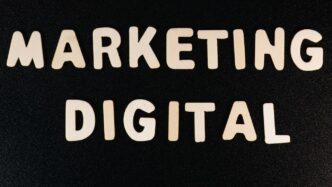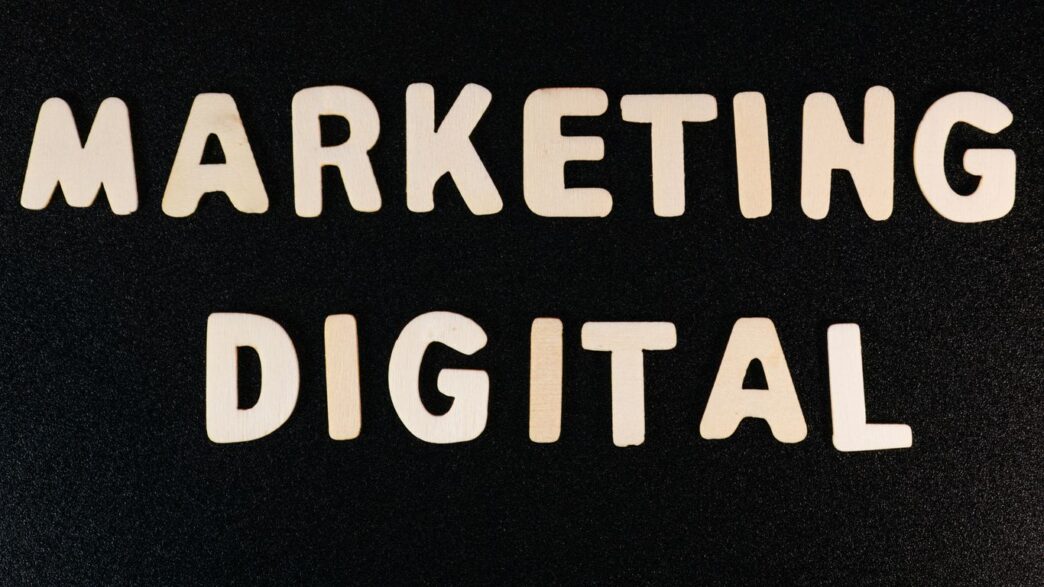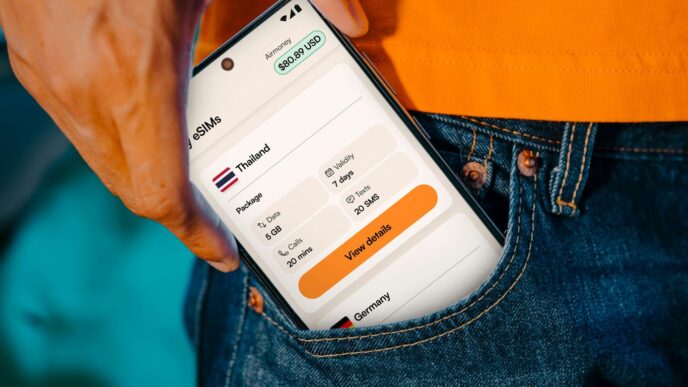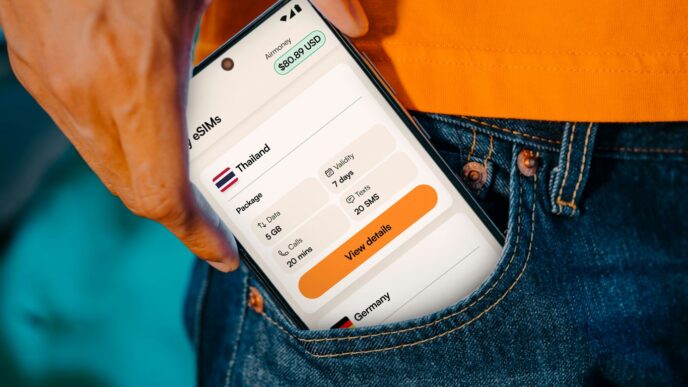Marketing in 2025 is all about grabbing and keeping attention. The way we connect with people is changing fast, with new tech and different ways folks like to interact. If you want your business to grow, you’ve got to pay attention to these shifts. It’s not just about what’s new, but what actually works to get people interested and keep them coming back. Let’s look at some of the most important new marketing communication tools and ideas you should be thinking about.
Key Takeaways
- Artificial intelligence is becoming a main part of marketing, helping with everything from understanding data to making content just for one person.
- Short videos are still super popular, and businesses should use them a lot, working with others and even their own customers to make them.
- People care more about their privacy. Businesses need to collect data the right way and be open about it to build trust.
- Making things personal for each customer is key. Using real-time information helps make sure people get what they need, when they need it.
- Getting back to in-person events is a big deal. While online is still important, face-to-face meetings help build stronger connections with people.
Harnessing Artificial Intelligence For Smarter Marketing
Artificial Intelligence (AI) and Machine Learning (ML) are no longer just fancy tech terms; they’re becoming the backbone of smart marketing in 2025. These tools help us sort through mountains of data to find patterns we’d never spot on our own. This means we can get a much better idea of what customers might do next, making our campaigns hit the mark more often. AI marketing tools empower marketing teams to accelerate pipeline generation, deliver personalized campaigns at scale, forecast customer behavior, and automate routine tasks.
Leveraging AI for Data-Driven Insights and Predictive Analytics
Think about all the information your business collects – website visits, purchase history, social media interactions. AI can crunch all that data way faster than any human team. It spots trends and predicts what customers will want, sometimes even before they know it themselves. This helps us target the right people with the right message at the right time. It’s like having a crystal ball for your marketing efforts.
Here’s a quick look at what AI can do:
- Identify emerging customer preferences.
- Forecast sales trends with more accuracy.
- Segment audiences based on complex behaviors.
- Optimize ad spend by predicting performance.
Enhancing Customer Personalization at Scale with Machine Learning
Remember when personalization meant just using someone’s first name in an email? AI takes that to a whole new level. Machine learning algorithms can look at what each person likes, what they’ve bought, and how they interact with your brand. Then, they can tailor product suggestions, website content, and even marketing emails just for them. This makes customers feel seen and understood, which is a big deal these days. It’s not just about one-off messages; AI can do this for thousands, even millions, of customers simultaneously.
The ability to offer tailored experiences across all digital touchpoints is becoming less of a nice-to-have and more of a standard expectation. Businesses that can adapt and provide this level of individual attention are likely to see stronger customer relationships.
Utilizing AI-Powered Tools for Content Creation and Automation
Creating content can be a huge time sink. AI tools are stepping in to help. They can assist with writing blog post drafts, generating social media captions, and even creating basic video scripts. Beyond creation, AI can automate a lot of the repetitive tasks. Think about sending out follow-up emails after a purchase or managing ad bids in real-time. This frees up your marketing team to focus on the bigger picture, like strategy and creative thinking, instead of getting bogged down in daily chores. It’s about working smarter, not just harder.
The Dominance of Short-Form Video Content
Okay, so let’s talk about short-form video. If you’re not already on board, you’re probably missing out. Think TikTok, Instagram Reels, YouTube Shorts – these platforms aren’t just for dancing teens anymore. They’ve become a major way people consume information and entertainment, and businesses are catching on fast. This format is where a lot of the action is happening, and it’s showing up in marketing results. It’s all about quick, engaging clips that grab attention right away. People’s attention spans are, let’s be honest, pretty short these days, and these videos fit right into that. They’re easy to watch on the go, and they can pack a punch with information or entertainment in just a few seconds.
Integrating Short-Form Videos into Digital Marketing Strategies
So, how do you actually use these videos? It’s not just about posting randomly. You need a plan. Think about what your audience likes and what you want to achieve. Are you trying to show off a new product? Share a quick tip? Tell a story about your brand? Short-form video is super flexible. You can use it for behind-the-scenes looks, quick tutorials, customer testimonials, or even just to show off your brand’s personality. The key is to be authentic and provide some kind of value, whether that’s educational, entertaining, or inspiring. Don’t try to make every video a hard sell; focus on building a connection first.
Maximizing Audience Engagement with Branded and UGC Videos
When it comes to getting people to watch and interact, there are two main types of short-form videos to consider: branded content and user-generated content (UGC). Branded videos are what you create yourself. They should align with your brand’s voice and visual style, but still feel natural and not overly produced. UGC, on the other hand, is content created by your customers. This stuff is gold! When customers share their experiences with your product or service, it feels way more real and trustworthy to other potential customers. Encourage your audience to create and share their own videos, maybe by running a contest or creating a branded hashtag. It’s a fantastic way to get authentic promotion and build a community around your brand.
Collaborating with Influencers for Expanded Reach
Another big piece of the short-form video puzzle is working with influencers. Now, we’re not necessarily talking about the mega-celebrities here. Often, smaller influencers, sometimes called nano- or micro-influencers, can be even more effective. They tend to have a more dedicated and engaged following within a specific niche. When they create short-form videos featuring your brand, it feels like a genuine recommendation from someone their audience trusts. It’s a smart way to get your content in front of new eyes and tap into established communities. Just make sure the influencer’s audience and values align with your brand’s – that authenticity is key.
The shift towards short-form video isn’t just a trend; it’s a fundamental change in how people consume content online. Brands that adapt quickly will find it easier to capture attention and build meaningful connections with their audience in 2025.
Prioritizing Privacy and First-Party Data

It’s getting harder to ignore the big shift happening in how we handle customer information. With new rules and people just being more aware, relying on old ways of tracking everyone isn’t really working anymore. The future of marketing is built on trust and direct relationships. This means we need to get serious about how we collect and use data, making sure it’s done the right way.
Ethical Data Collection and Privacy Compliance
Think about it: people are more careful with their personal details than ever before. That’s why collecting data ethically isn’t just a good idea, it’s a requirement. We need to be upfront about what information we’re gathering and why. This isn’t just about following the law, like GDPR or similar regulations, it’s about building a foundation of honesty with our customers. When people know their data is being handled responsibly, they’re more likely to share it, and that’s a win-win.
Here’s a quick look at what ethical collection means:
- Transparency: Clearly tell people what data you’re collecting and how it will be used. No hidden clauses.
- Consent: Get explicit permission before collecting or using personal information. No assuming.
- Security: Protect the data you have. Use strong encryption and keep it safe from breaches.
- Purpose Limitation: Only use data for the specific reasons you told people you would.
Building Consumer Trust Through Transparent Practices
Trust is like a fragile plant; it takes time to grow and can be easily damaged. In today’s world, transparency is the sunlight and water that helps that plant thrive. When we’re open about our data practices, customers feel more secure. This means avoiding vague language and making our privacy policies easy to understand. It’s about showing, not just telling, that we respect their privacy. This approach helps us build a loyal customer base that feels good about interacting with our brand. We’re seeing a lot of companies move towards a privacy-first marketing strategy because of this.
Being upfront about data collection and usage isn’t just a compliance checkbox; it’s a strategic advantage. It differentiates brands in a crowded market and cultivates a loyal customer base that values honesty and respect.
Leveraging First-Party Data for Enhanced Marketing Efforts
So, what’s the alternative to all the third-party tracking that’s becoming less reliable? It’s focusing on first-party data. This is the information we collect directly from our customers – think website interactions, purchase history, survey responses, or direct feedback. It’s gold because it’s accurate and comes straight from the source. By using this data, we can create more personalized experiences without crossing privacy lines. It allows us to understand our audience on a deeper level, leading to more effective marketing campaigns and stronger customer relationships. It’s about quality over quantity, and building connections that last.
Elevating Customer Experiences Through Personalization
In today’s crowded marketplace, just showing up isn’t enough. Customers expect brands to know them, to understand what they need before they even ask. This is where personalization moves from a nice-to-have to a must-have. It’s about making each person feel like they’re interacting with a brand that truly gets them, not just another faceless company.
Delivering Hyper-Personalized Experiences Across Digital Channels
Forget generic email blasts or one-size-fits-all ads. We’re talking about tailoring every single interaction. Think product recommendations that actually make sense for you, website content that shifts based on your past browsing, or even app notifications that arrive at just the right moment. This isn’t science fiction anymore; it’s about using the data we have to make every digital touchpoint feel individual. When done right, it makes customers feel seen and valued, which is a pretty big deal.
Utilizing Real-Time Data for Tailored Customer Journeys
What makes this level of personalization possible? It’s all about using information as it comes in. If a customer just added an item to their cart but didn’t buy, a real-time alert might offer a small discount. If they’ve been browsing hiking gear, showing them related accessories on their next visit makes sense. This dynamic approach means the customer’s journey isn’t fixed; it adapts to their actions and interests on the fly. It’s like having a helpful store assistant who knows your preferences without you having to say a word.
Here’s a quick look at how different channels can adapt:
- Website: Dynamic content blocks, personalized product carousels.
- Email: Subject lines and content tailored to past purchases or browsing history.
- Mobile App: Push notifications with relevant offers or updates based on user behavior.
- Social Media: Ads that reflect recent interests or viewed products.
The Importance of Personalization for Brand Loyalty
When customers consistently have positive, relevant experiences, they stick around. It builds a connection that goes beyond just the product or service. They start to trust the brand, feel a sense of belonging, and are less likely to jump ship to a competitor. In fact, studies show a significant percentage of consumers are willing to spend more with businesses that prioritize a great customer experience.
Making customers feel understood and catered to isn’t just good service; it’s smart business. It turns one-time buyers into repeat customers and, eventually, into brand advocates. This kind of loyalty is hard to buy and even harder to replicate.
Ultimately, personalization is about building relationships. By treating each customer as an individual and adapting your communications accordingly, you create a more meaningful and satisfying experience. This, in turn, drives loyalty and contributes significantly to long-term business success.
Strategic Partnerships and Community Building

In 2025, businesses are finding that going it alone just doesn’t cut it anymore. Building strong connections with other companies and creating a loyal following around your brand is becoming super important. It’s all about working smarter, not just harder, and that’s where partnerships and community come into play.
Expanding Reach Through Cost-Effective Partnership Marketing
Think of partnership marketing as a way to team up with businesses that aren’t your direct competitors but share a similar audience. It’s a smart way to get your name out there without breaking the bank. Instead of spending a ton on ads, you can tap into another company’s customer base. This could mean anything from cross-promoting each other’s services to running joint giveaways. It’s a win-win: you get more eyes on your brand, and they do too. Plus, when you partner with the right people, it feels more authentic than a traditional ad.
Here are a few ways to make partnership marketing work:
- Joint Webinars or Online Workshops: Share your knowledge with a partner’s audience. This positions both brands as experts.
- Content Swaps: Write a guest blog post for a partner’s site, or have them contribute to yours. It’s a simple way to share audiences.
- Bundled Offers: Create a special package that includes products or services from both companies. This adds extra value for the customer.
- Affiliate Programs: Reward partners for sending new customers your way. It’s a performance-based approach that can be very effective.
Building these relationships takes time and effort, but the payoff in terms of new customers and brand awareness can be huge. It’s about finding common ground and creating something valuable together.
Fostering Community-Driven Initiatives for Deeper Connections
Beyond just partnerships, actively building a community around your brand is a game-changer. This isn’t just about having followers; it’s about creating a space where people feel connected to your brand and to each other. Think of it like a club for your biggest fans. When people feel like they’re part of something, they’re more likely to stick around and become loyal customers. This can be done through online forums, dedicated social media groups, or even local meetups.
What makes a community stick?
- Shared Values: People connect when they believe in what your brand stands for.
- Active Engagement: You need to be present, respond to comments, and start conversations.
- Exclusive Content or Perks: Give your community members something special, like early access to products or behind-the-scenes looks.
- User-Generated Content: Encourage members to share their own experiences with your brand. This builds trust and authenticity.
Leveraging Joint Content and Co-Branded Promotions
When partnerships and community efforts really click, you see joint content and co-branded promotions. This is where you and your partner create something together that benefits both of your audiences. It could be a co-authored e-book, a joint social media campaign, or even a limited-edition product. These initiatives often get more attention because they come from a place of collaboration. For example, a fitness apparel brand might team up with a healthy meal delivery service for a "Wellness Challenge" campaign. They’d create content together, promote it across their channels, and offer a special discount to participants. This kind of collaboration helps you reach new people and strengthens your brand’s image by associating it with other reputable companies. You can find more about how companies are using content to boost visibility on TechBullion.
The most successful collaborations in 2025 will be those that genuinely add value to the customer’s life.
The Resurgence of In-Person Events
It might seem a bit old-school in our super-connected digital world, but guess what? People are actually craving real-life interactions again. In 2025, we’re seeing a definite comeback for in-person events, and it’s not just a fleeting trend. While online gatherings have their place, there’s a growing appreciation for the unique energy and connection that happens when people are in the same room.
The Unique Benefits of Face-to-Face Gatherings
There’s just something different about being physically present. It allows for spontaneous conversations, deeper networking, and a more memorable experience overall. Think about it: you can read body language, share a laugh, and build rapport in ways that just don’t translate through a screen. This direct human connection is something many consumers and business partners are actively seeking out.
- Unmatched Networking Opportunities: Real-time, face-to-face interactions lead to stronger professional relationships.
- Enhanced Brand Immersion: Attendees can physically interact with products and services, creating a lasting impression.
- Authentic Engagement: Spontaneous discussions and shared experiences build genuine connections that digital platforms struggle to replicate.
- Reduced Digital Fatigue: Offers a welcome break from constant screen time, allowing for more focused attention.
The shift back to in-person events isn’t about abandoning digital tools; it’s about recognizing that live interactions offer a distinct advantage for building trust and creating memorable brand moments. This is a key area where marketing budgets are starting to flow again.
Integrating Live Events into a Blended Marketing Strategy
So, how do you make these live events work in today’s world? It’s all about a smart mix. Think of in-person events as a powerful component within a larger, integrated marketing plan. You can use digital channels to promote your event, build excitement beforehand, and then keep the conversation going long after everyone has gone home. This blended approach means you get the best of both worlds – the tangible impact of live interaction and the broad reach of digital communication. For instance, a successful event can generate a wealth of user-generated content that can then be shared across social media platforms, extending its reach and impact.
Investing in Event Marketing for Authentic Engagement
It’s clear that putting resources into live events is becoming a priority. Many businesses are seeing the return on investment from creating these real-world experiences. This isn’t just about throwing a party; it’s about strategic planning to create meaningful touchpoints. When done right, events can significantly boost brand loyalty and create a buzz that digital marketing alone can’t always achieve. The industry is anticipating increased spending in this area, with a significant portion of professionals expecting higher budgets for events in the coming year. This suggests a strong confidence in the power of live gatherings to drive business results and build stronger connections.
| Event Type | Expected Budget Increase (2025) | Primary Benefit |
|---|---|---|
| Conferences | 66% | Knowledge sharing and networking |
| Trade Shows | 59% | Product showcasing and lead generation |
| Experiential Events | 70% | Brand immersion and customer engagement |
| Workshops | 62% | Skill development and focused interaction |
Engaging Gen Z and Younger Audiences
Innovative Approaches Beyond Traditional Social Media
Forget just posting on Instagram and hoping for the best. Gen Z is way past that. They’re looking for brands that get them, that speak their language, and that show up in places they actually hang out. This means thinking outside the usual social media box. They’re not just scrolling; they’re interacting, creating, and expecting more. Brands that want to connect need to be where the conversation is, and that’s often in less obvious digital spaces.
Here’s how to start thinking differently:
- Embrace the Creator Economy: Gen Z trusts people they see as real. Partnering with creators, even smaller ones (nano and micro-influencers), can feel more authentic than a big celebrity endorsement. Think about how you can collaborate on content that feels natural to their audience.
- Show Your Values: This generation cares about what companies stand for. Are you talking about sustainability? Diversity? Social issues? They want to see that you’re not just selling stuff, but that you have a purpose. About half of Gen Z say they’re more likely to buy from companies that treat their employees well, so don’t forget that internal stuff matters too.
- User-Generated Content (UGC) is Gold: Let your customers do the talking. Encourage them to share their experiences, photos, or videos using your products. This builds trust way faster than any ad you can run. It’s like getting a recommendation from a friend, which is exactly what Gen Z values.
Leveraging Interactive Experiences like VR and AR
Virtual Reality (VR) and Augmented Reality (AR) aren’t just for gaming anymore. For Gen Z, these technologies offer new ways to experience brands and products. Imagine trying on clothes virtually before buying, or exploring a new travel destination from your living room. This kind of interactive engagement is what grabs their attention and makes a lasting impression.
- Virtual Try-Ons: Allow customers to see how products look on them using AR filters on social media or your app. This cuts down on returns and makes shopping more fun.
- Immersive Product Demos: Use VR to let people experience your product or service in a simulated environment. Think virtual tours of a hotel or a hands-on demo of a complex gadget.
- Gamified Experiences: Create AR-powered games or challenges that tie into your brand. This can be a great way to get people interacting with your products in a playful way.
The way younger audiences discover products is changing. Social media is a big deal, but they’re also looking for experiences that feel real and engaging. If you can offer something interactive, you’re already ahead of the game. It’s about making them a part of the brand story, not just a passive observer.
Aligning with Gen Z Values for Meaningful Connections
Connecting with Gen Z isn’t just about the latest trends; it’s about building genuine relationships based on shared values. They’re looking for brands that are transparent, ethical, and that contribute positively to the world. When your brand’s mission aligns with their beliefs, you create a much stronger bond.
- Sustainability Matters: Show them you care about the planet. Highlight eco-friendly practices, responsible sourcing, and efforts to reduce your environmental footprint. Around half of Gen Z consider sustainability when they buy things.
- Social Responsibility: Take a stand on issues that matter to them, like diversity, inclusion, and social justice. Authenticity is key here; don’t just jump on a bandwagon. They can spot insincerity a mile away.
- Ethical Business Practices: Be upfront about how you operate. Fair treatment of employees, transparent supply chains, and honest marketing build trust. This is something that a significant portion of Gen Z looks for.
By focusing on these values, you move beyond transactional relationships and start building a community of loyal customers who believe in what your brand represents.
Wrapping It Up: What’s Next for Your Business?
So, as we look ahead to 2025, it’s pretty clear that marketing isn’t just about shouting into the void anymore. It’s about being smart, being quick, and really getting to know who you’re talking to. Things like short videos and AI tools are becoming super important for grabbing attention and making real connections. Plus, remember that people care about what your business stands for, so being genuine and maybe even a little eco-conscious goes a long way. It might seem like a lot, but by focusing on these key shifts – like using data wisely, making things personal, and showing up where your customers actually are – you can definitely keep your business growing and stay ahead of the game. It’s all about adapting and staying connected.
Frequently Asked Questions
What’s the big deal with short videos in 2025?
Short videos, like those on TikTok and Instagram Reels, are super popular! In 2025, businesses will use them a lot to connect with people. They can make their own fun videos, share videos from customers, or team up with influencers to reach more people. Most people watch these videos all the way through, so they’re a great way to get noticed.
How can companies use AI to be better at marketing?
AI, or artificial intelligence, helps businesses understand customers better by looking at lots of information. It can guess what customers might like or need. This means companies can show people ads and messages that are just right for them, making marketing more effective and less annoying.
Why is it important for brands to protect customer privacy?
People are more aware of how their information is used. In 2025, businesses need to be honest about collecting data and get permission. When customers trust a company with their information, they feel safer and are more likely to stick with that brand. It’s like building a strong friendship based on honesty.
What does ‘hyper-personalization’ mean for customers?
Hyper-personalization means making every experience super special for each person. Instead of just using your name, companies will use what they know about you right now to show you exactly what you want, when you want it. This makes shopping and interacting with brands feel more like a one-on-one conversation.
Are real-life events coming back into style for marketing?
Yes! Even though we do a lot online, people really like meeting in person. In 2025, businesses are planning more events like parties, conferences, or workshops. These face-to-face meetings help build stronger connections and create more memorable experiences than just seeing something online.
How can brands connect with younger people like Gen Z?
Younger folks like Gen Z don’t always respond to old-school ads. They like brands that stand for something important, like helping the environment. They also enjoy fun, interactive things like games or virtual reality. Brands can get their attention by being real and supporting causes that matter to young people.














